Day 7: Trip to Abu Simbel
The next day, we were scheduled to fly back to Cairo and then back home. There was an optional excursion to Abu Simbel in the morning, that required taking a early morning bus from Aswan to Abu Simbel for a 3 hr (~300 km) journey one way. The itinerary involved getting on the bus around 6AM in the morning, arriving at Abu Simbel around 9, spending a few hours touring the site and then driving back to Aswan around noon to make it back in time for the flight to Cairo that left around 4PM. It is also possible to take a flight from Aswan airport to Abu Simbel, which a couple of people in our group did.
After several early morning excursions, I was at first inclined to take it easy and pass on the Abu Simbel excursion, but decided to do it after reading about Abu Simbel, and I’m glad I did. The drive to Abu Simble cut straight through the desert and acted as a reminder that Egypt is mostly desert, something easy to forget when you spend most of your time on a river cruise. We made a bathroom stop along the way and I remember being shocked by how hot it was outside!
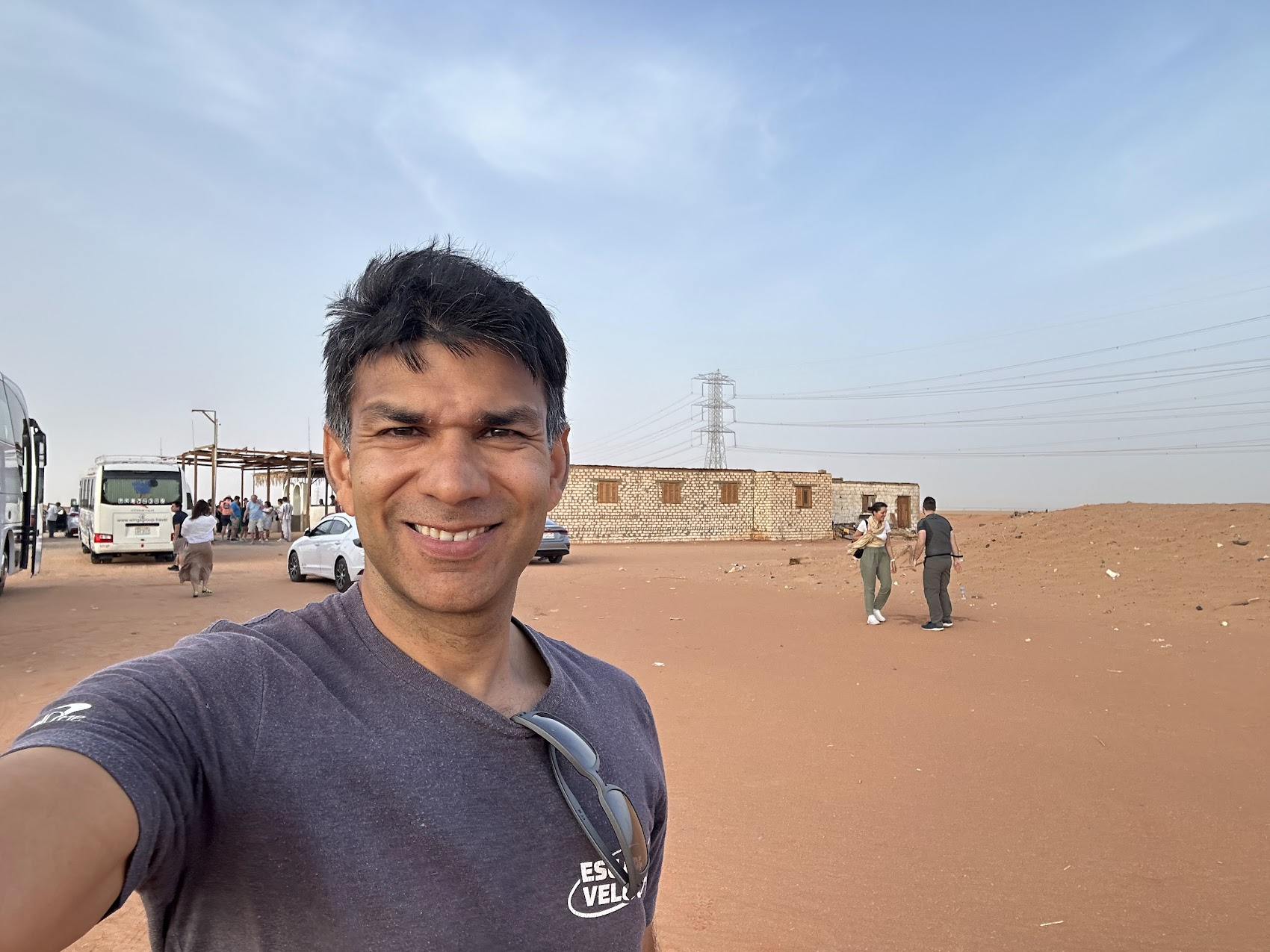
The temple of Abu Simbel was completed around year 24 of the reign of Ramesses II (~ 1265 BC) and took about twenty years to build,. It was dedicated to the gods Amun, Ra-Horakhty, and Ptah, as well as to the deified Ramesses himself. It is generally considered the grandest and most beautiful of the temples commissioned during the reign of Ramesses II, and one of the most beautiful in Egypt.
Abu Simbel in its original location by the Nile would have been completely submerged by lake Nasser. To save it, a multinational team of archeologists, engineers and skilled heavy equipment operators working together under the UNESCO banner cut the entire site into large blocks, dismantled, lifted and reassembled in a new location 65 metres higher and 200 metres back from the river, in one of the greatest challenges of archaeological engineering in history.
This 1972 documentary on the project is well worth watching to get a sense of the planning and care that went into saving one of Egypt’s most spectacular temples.
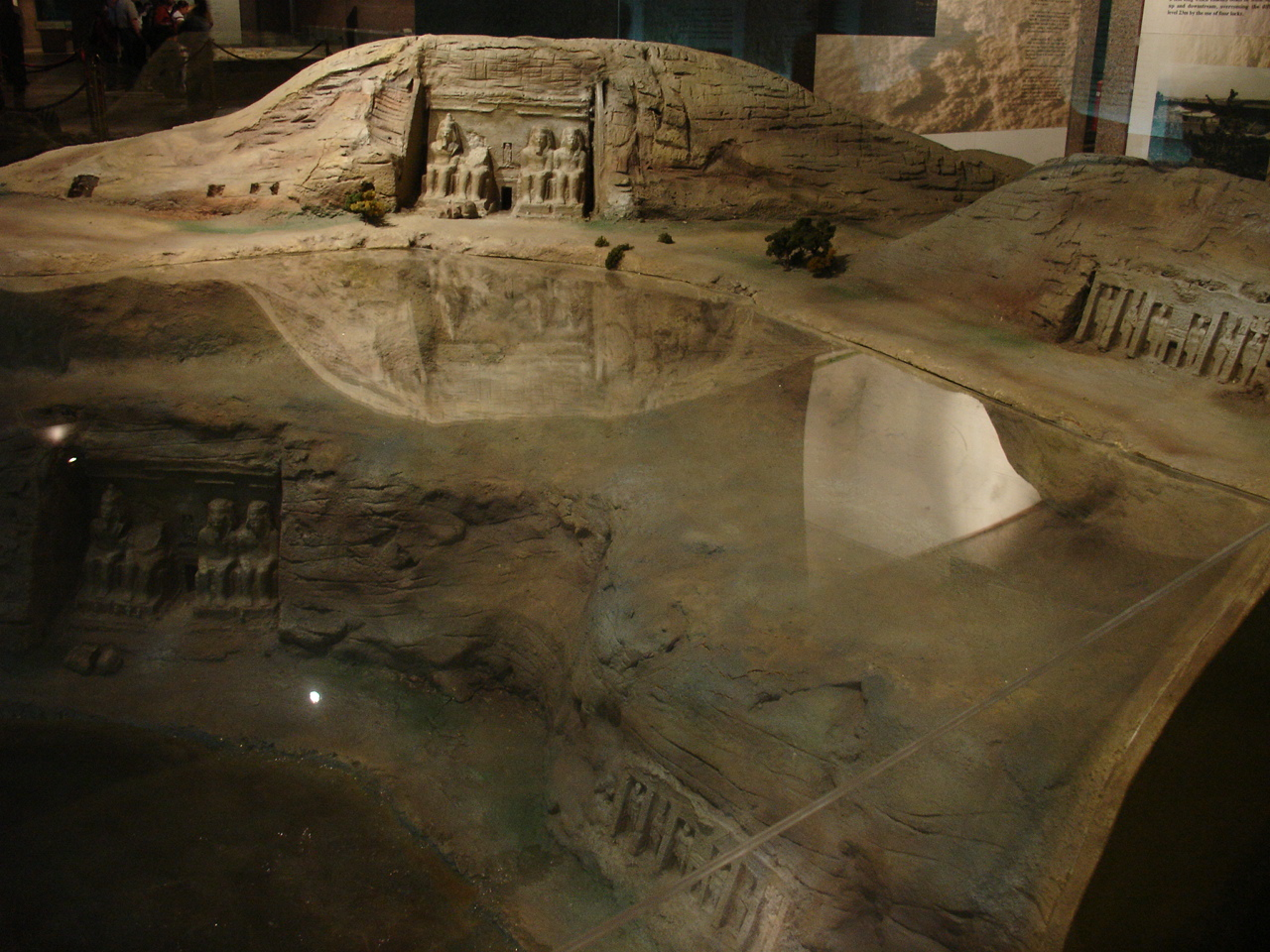
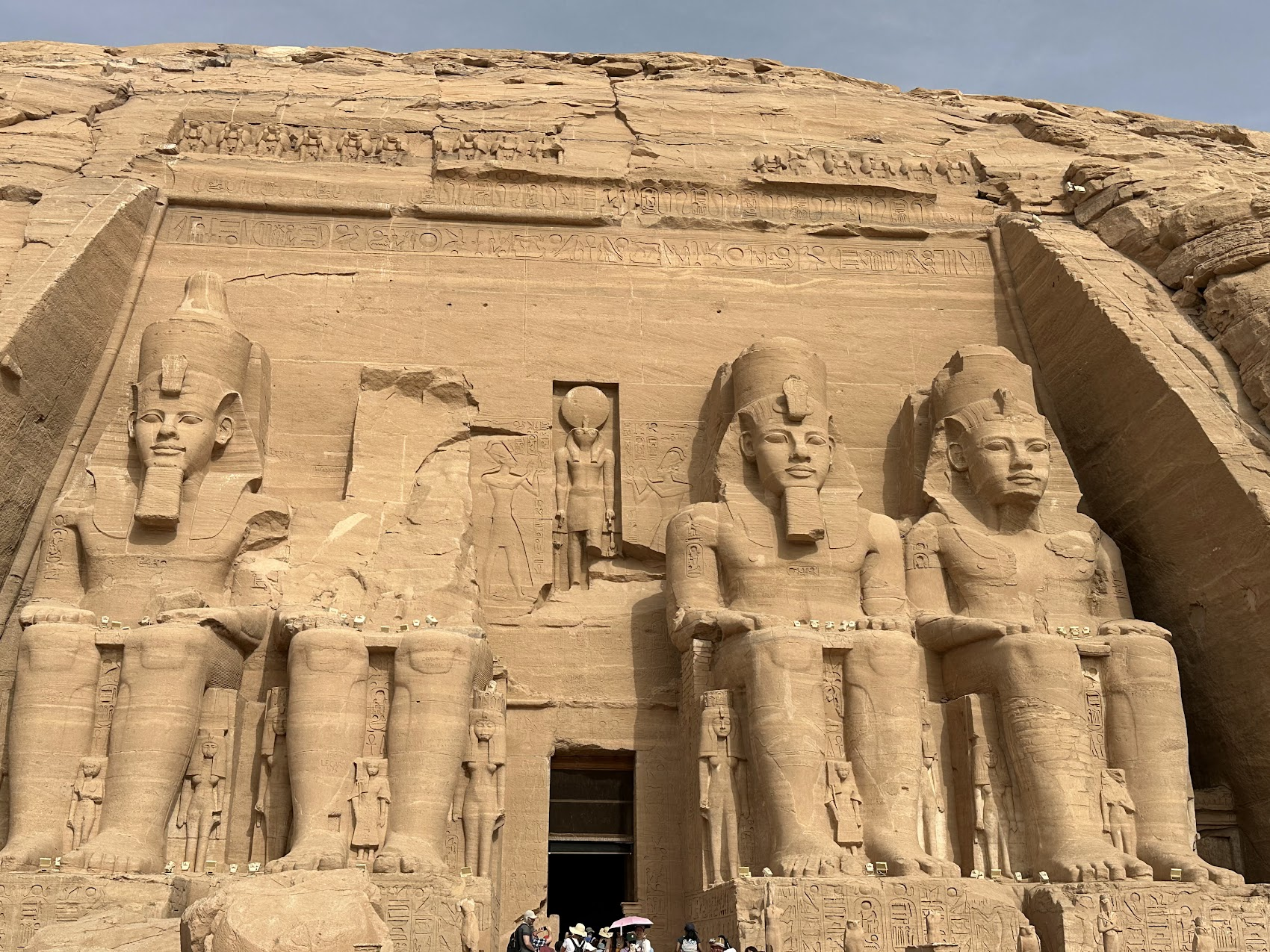
The entrance is flanked by four colossal, 20 m statues, each representing Ramesses II seated on a throne and wearing the double crown of Upper and Lower Egypt. The statue to the immediate left of the entrance was damaged in an earthquake, causing the head and torso to fall away; these fallen pieces were not restored to the statue during the relocation but placed at the statue’s feet in the positions originally found. Next to Ramesses’s legs are a number of other, smaller statues, none higher than the knees of the pharaoh, depicting: his chief wife, Nefertari, his queen mother Mut-Tuy and his first two sons and first six daughters.
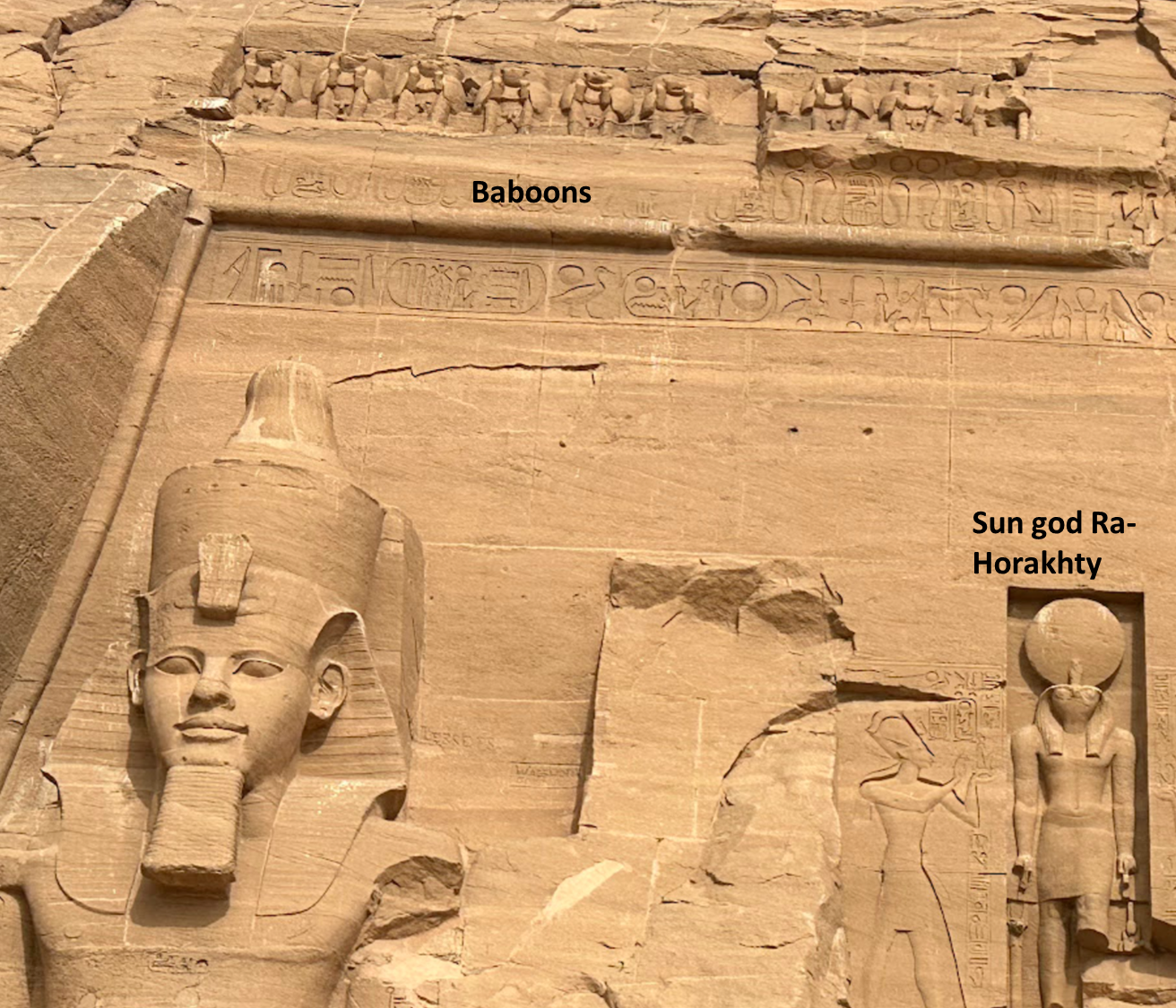
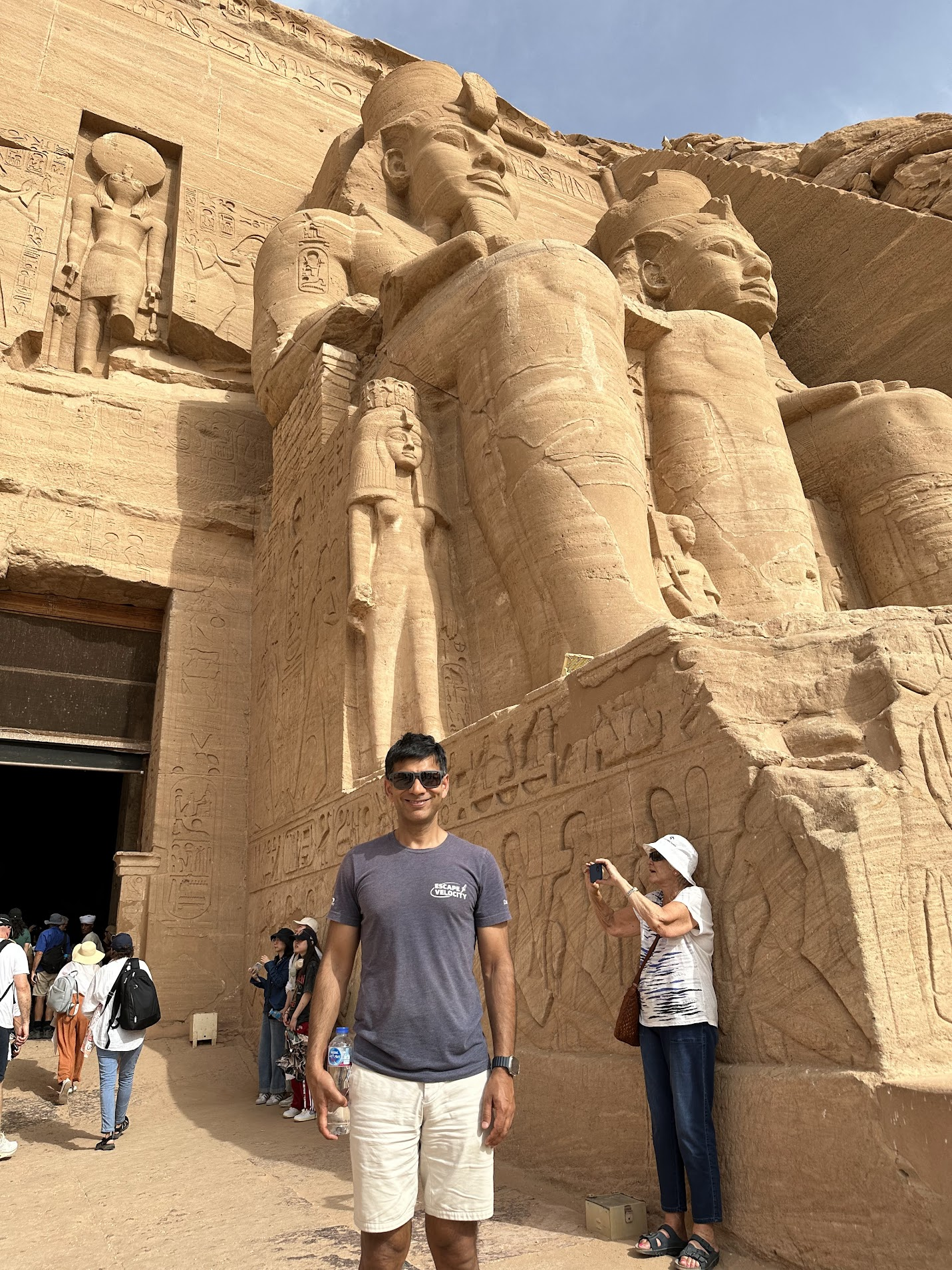
The interior of the temple has the same triangular layout that most ancient Egyptian temples follow, with rooms decreasing in size from the entrance to the sanctuary.
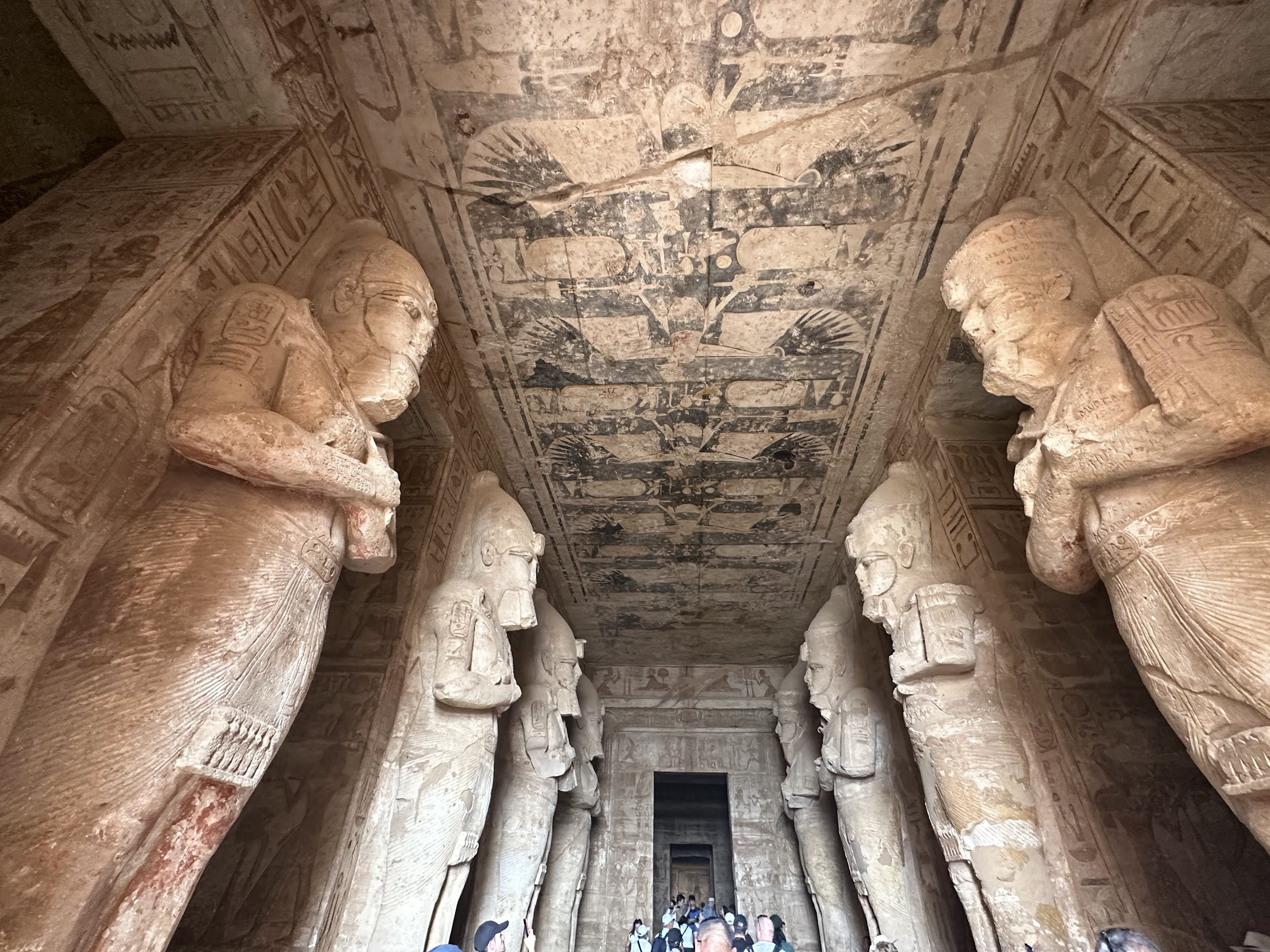
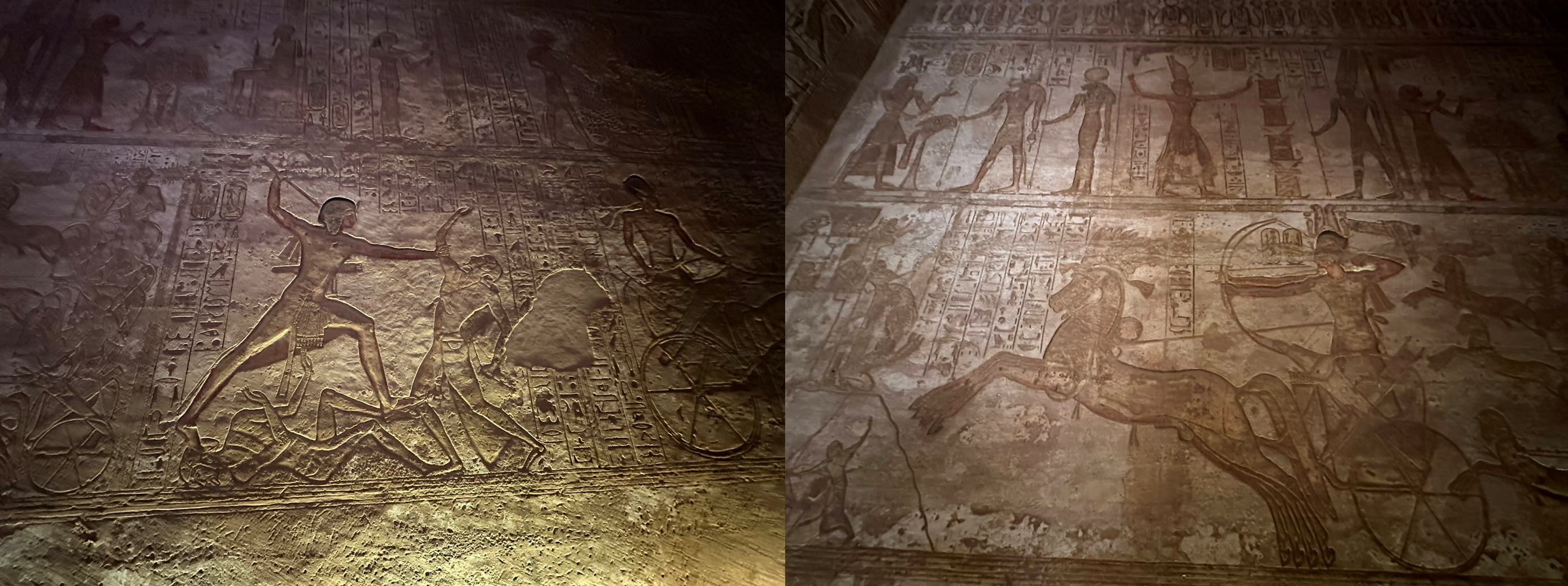
The wall reliefs around the hypostyle hall, depict various battles in the military campaigns waged in Rameses II’s reign, such as the battle of Kadesh and victories in Libya and Nubia. In fact Rameses II located Abu Simbel so close to Egypt’s Nubian territories to serve as a reminder of Egypt’s military power.
The battle of Kadesh against the Hittites fought early in Rameses II’s reign was a cornerstone of his reign as pharaoh. Because of faulty intelligence, Rameses’s army was ambushed and nearly routed. Fighting for his life, Rameses personally led several charges into the Hittite ranks and saved the day. Later, other divisions of his army arrived, and the battle resulted in a bloody stalemate. Rameses was unable to capture the walled city of Kadesh, and the Hittites weren’t able to drive the Egyptians out. Ultimately, Rameses retreated back to Egypt and proclaimed the campaign to be a massive success. Nearly 15 years later, after several more campaigns against the Hittites, an official peace treaty was concluded between Egypt and the Hittites, concluding the long running borderland conflicts. A replica of this treaty hangs on a wall at the headquarters of the United Nations, as the earliest international peace treaty known to historians!
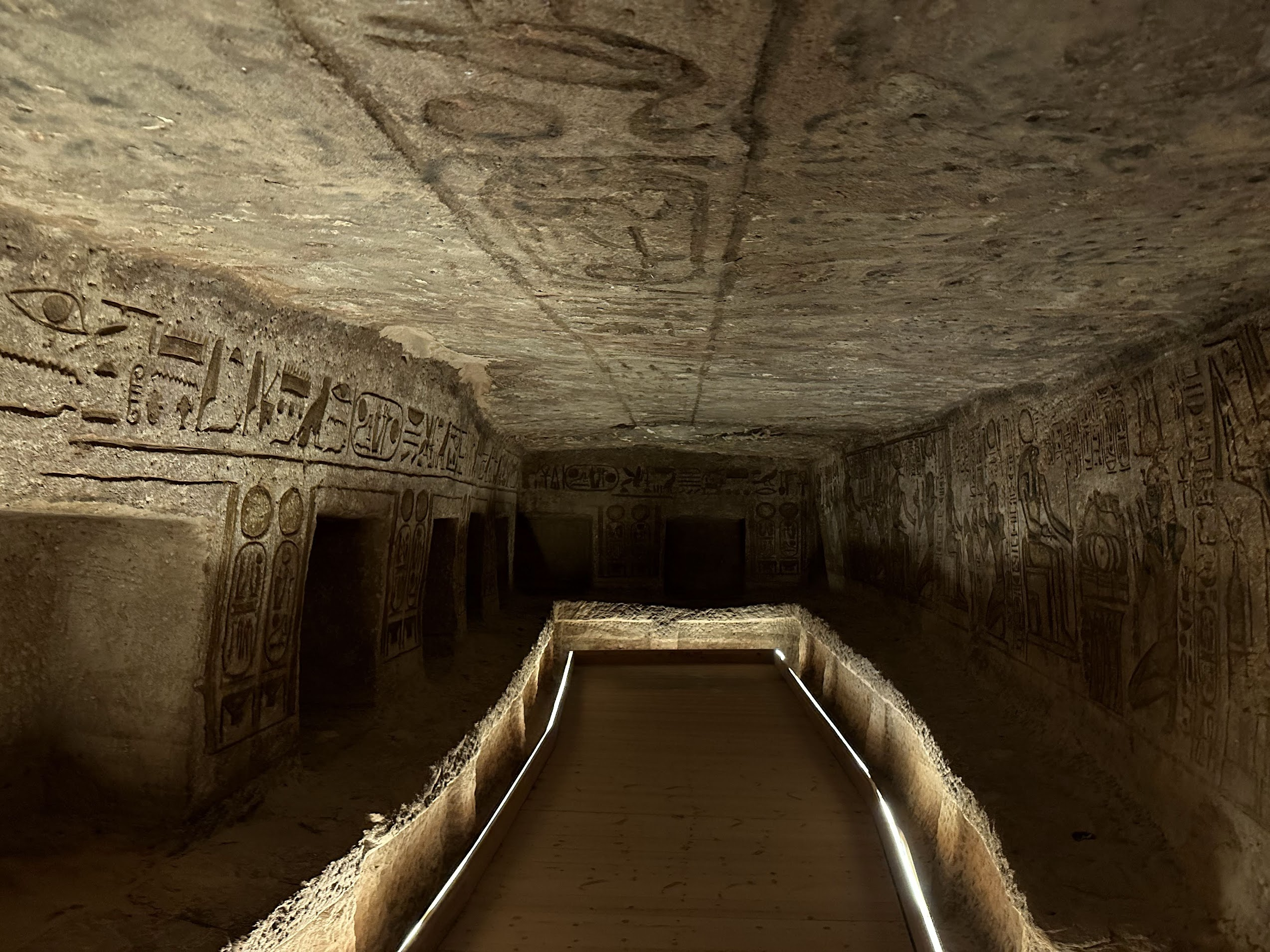
Branching off from the Hypostyle Hall, are several chambers. There are four hallways on the right side of the temple and two on the left.
These rooms likely served as treasuries, and they’re entirely adorned in carved reliefs. The reliefs in this section are almost entirely ceremonial, showing Ramesses presenting offerings to a variety of gods from the Egyptian pantheon.
From the hypostyle hall, one enters the second pillared hall, which has four pillars decorated with beautiful scenes of offerings to the gods. This hall gives access to the sanctuary. On a black wall of the sanctuary, are rock cut sculptures of four seated figures: Ra-Horakhty, the deified king Ramesses, and the gods Amun Ra and Ptah
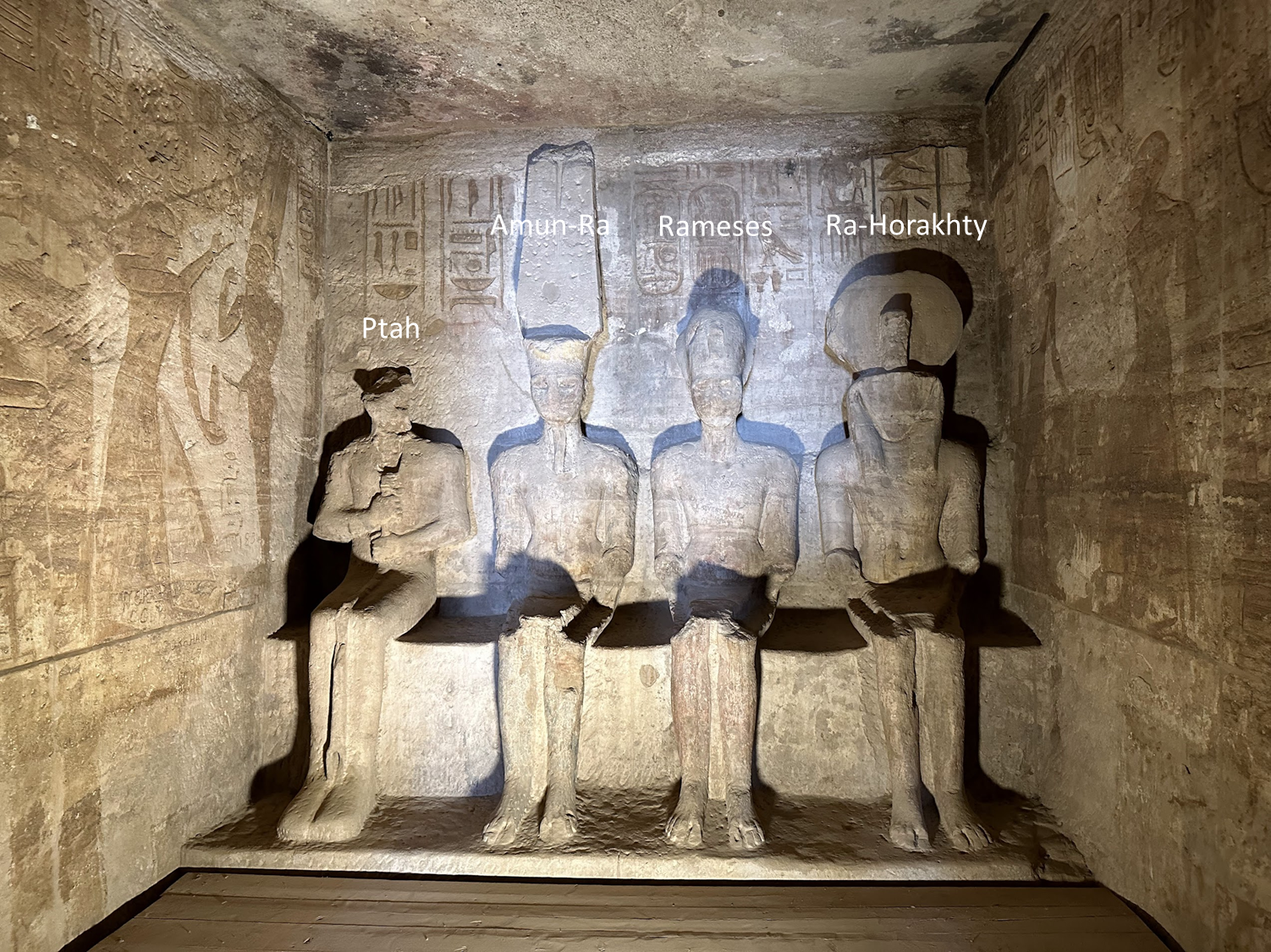
One of the most remarkable things about Abu Simbel’s Great Temple is its orientation. Twice a year, the rising sun would shine directly through the hall and right onto the statues at the back.
The phenomenon occurs on February 22, thought to be Ramesses II’s birthday, and on October 22, thought to be the date of his coronation. Thousands of people travel to Abu Simbel to witness this phenomenon. However, the original date of this phenomenon when the temple was built was likely different because the rotation axis of Earth precesses 360 degrees every 26,000 years and the location of the sun on the horizon on Oct 22 in ~1260BC was a bit different than now.
Next to Rameses II’s temple stands the temple of Nefertari, dedicated to Rameses II’s first and most beloved wives Nefertari and the goddess Hathor. While it was nice of Rameses to build a temple for his beloved wife, his megalomania is on full display as among the three statues on each side of the central doorway, two are of Rameses and one of Nefertari. The statues of their children stand by their feet. Note that the statues of Nefertari are comparable in scale to that of Rameses, indicating his love and high esteem for his wife. 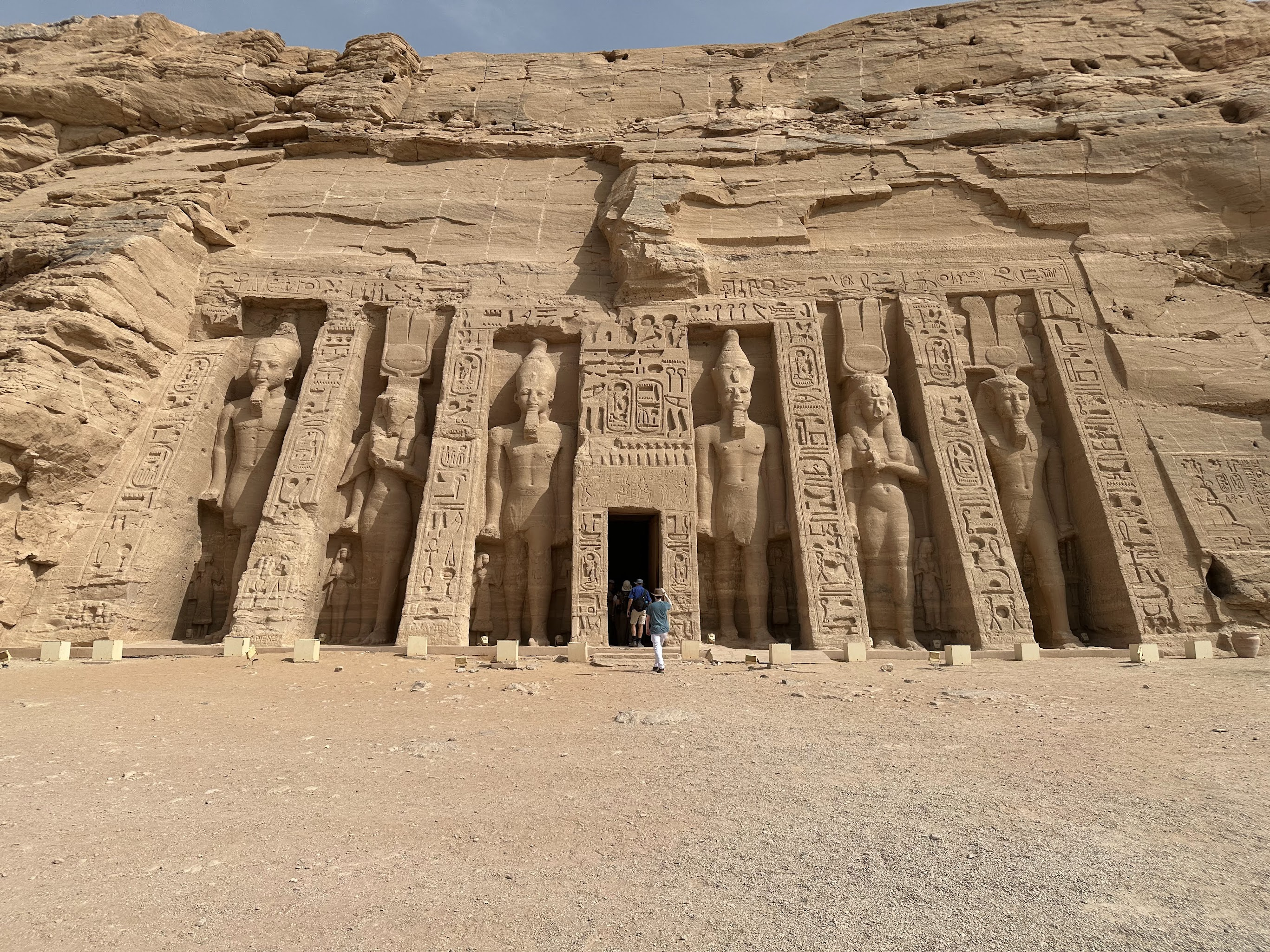
The interior of Nefertari’s temple has a similar layout as Rameses’s temple. Behind the entrance is a hall with six pillars bearing the face of goddess Hathor facing the center of the hall. The walls are covered by scenes of the king and queen before various gods and goddesses, the destruction of his enemies in the company of Nefertari and queen making offerings to the goddesses Hathor and Mut. Behind the pillared hall is a small vestibule that leads to a sanctuary where a rock-cut image of the goddess Hathor is seen emerging from the interior of the mountain.

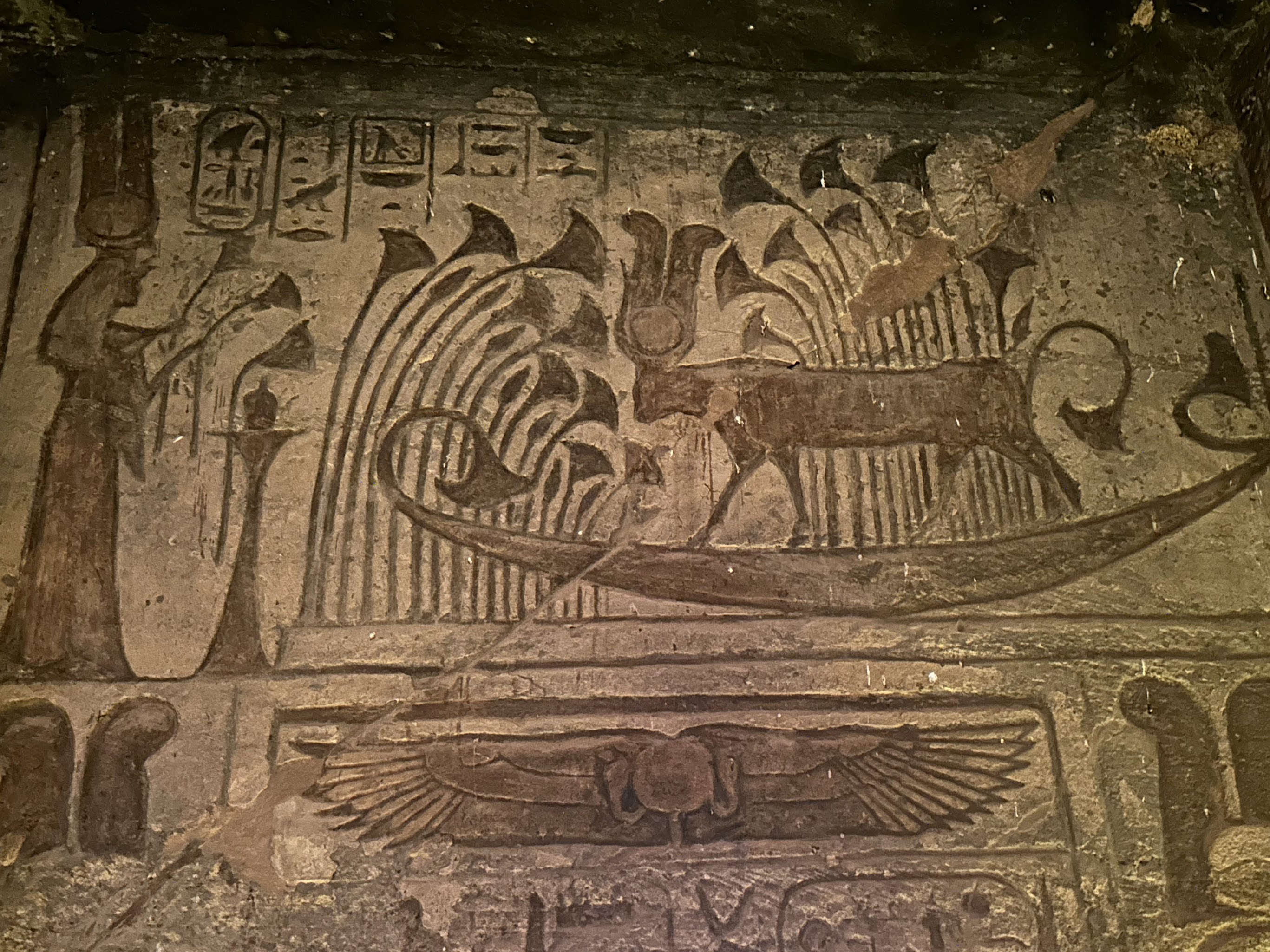
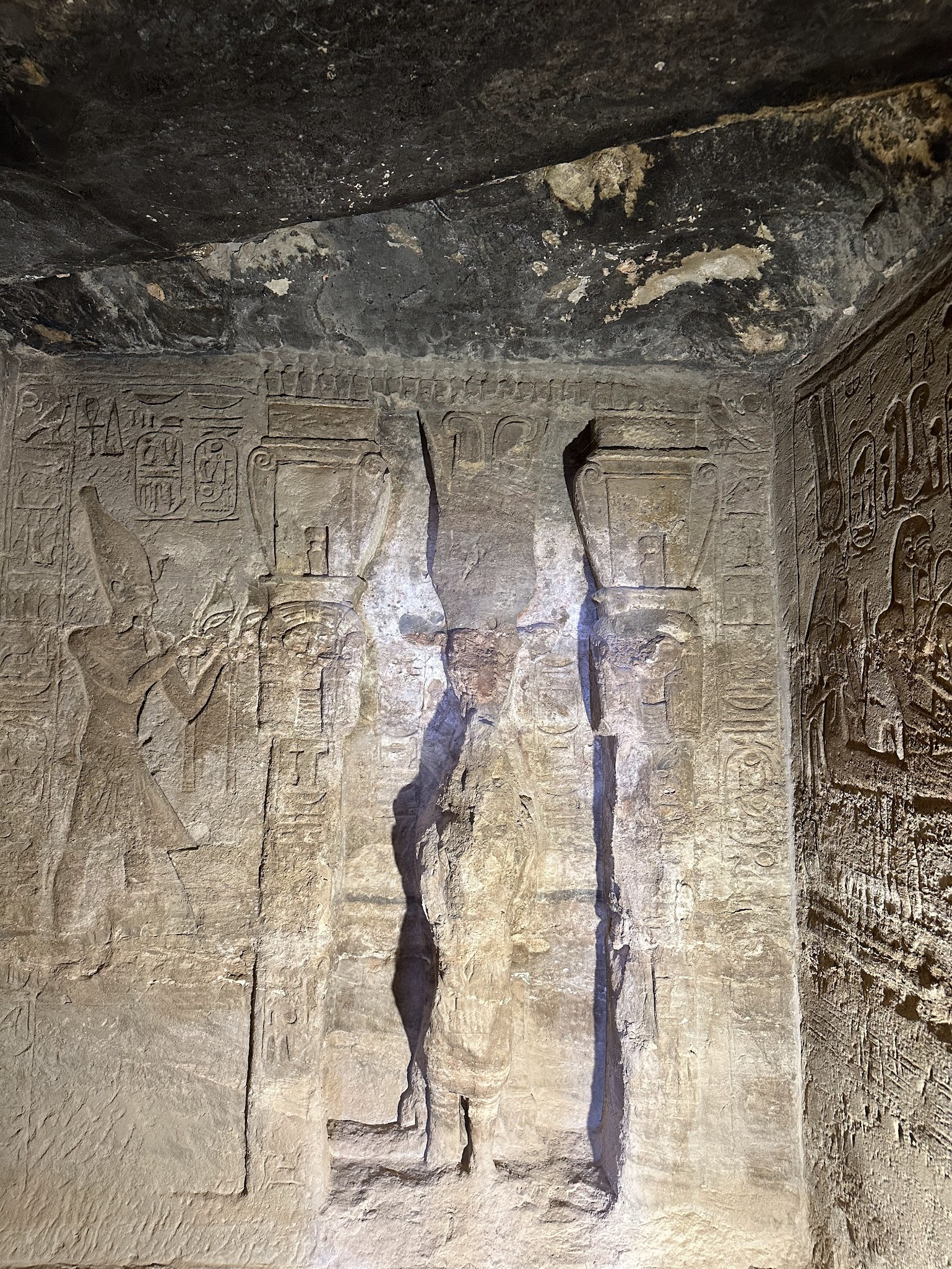
It is remarkable how the interior of Egyptian temples are consistently dominated by battle scenes and images of the pharaoh making offerings to various gods and goddesses and receiving their blessings. At Abu Simbel, I didn’t see any images of Rameses and Nefertari engaging in other aspects of their daily life–such as the royal couple and their family enjoying domestic bliss, Rameses participating in courtly activities, greeting the public etc. The reason could be that for the Egyptians, the pharaoh’s primary responsibility was to keep Egypt safe from external threats, and propitiate the gods.
After spending a few hours at Abu Simbel, we took the bus back to Aswan and then flew back to Cairo. I was received by a rep from Memphis tours at the airport, who dropped me to my hotel. I thought I was flying back to NY the next day but I had booked my flight a day later by mistake. At first I was tempted to do a day trip to Alexandria, about a 3 hour bus ride from Cairo. According to a few people on my tour who had visited Alexandria earlier, the look and feel is quite different from Cairo, because having been established by the Ptolemies, Alexandria lacked any significant Pharaonic history and retained significant Greek/Roman influence throughout its history. However after several days of non-stop touring, I was quite tired and just wanted to be home. So I changed my flight to one day earlier and flew back the next day.
I had an amazing time in Egypt. Not only did I learn a lot about one of the most important civilizations in human history, I also met some great people, had a lovely time cruising down the Nile, ate delicious food and had time to chill and reflect. This was one of my top vacations and I strongly recommend it to anyone. I also hope you had fun reading this blog! Please leave a comment if you did! 🙂

Leave a Reply